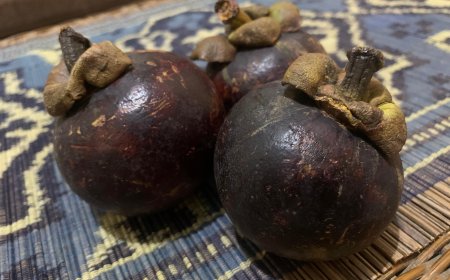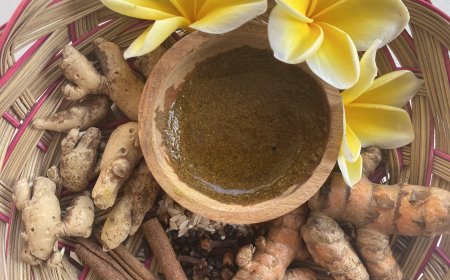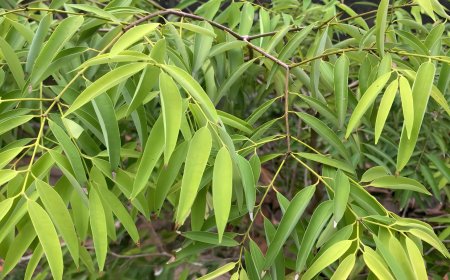Madori: A Plant That Is Not Only Beautiful But Also Beneficial
Usadha Tiwang is a traditional Balinese medical practice that focuses on tiwang disease, utilizing Madori plants as one of its medicinal ingredients. Madori, also known as the Crown Flower or Giant Milkweed, boasts captivating beauty with its vibrant-colored flowers. However, its beauty is not merely visual, as every part of this plant holds valuable health benefits.
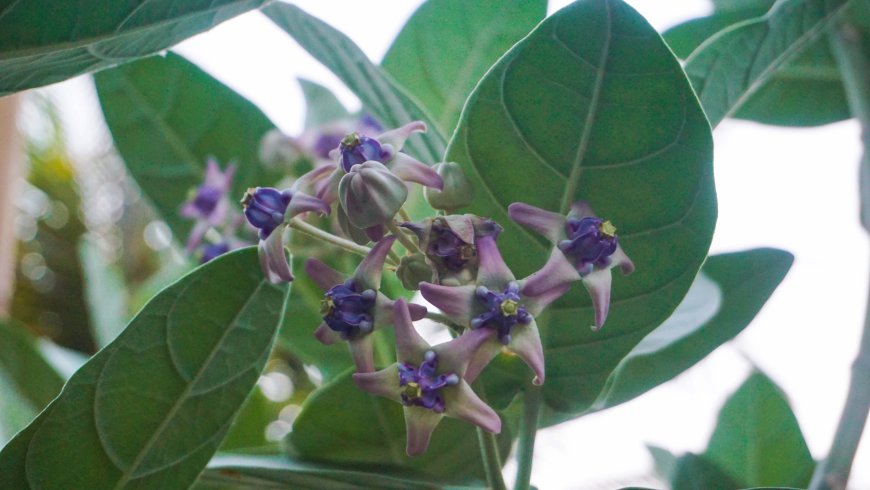
Bali, known as the 'Island of the Gods,' is not just a visually enchanting place but also a land where culture and tradition are integral parts of daily life. Balinese society firmly holds onto their traditional values, particularly in the field of medicine. Usadha Bali is a traditional medical knowledge that combines elements of Hinduism, local beliefs, and the preserved knowledge of herbal medicine. There are various forms of Usadha Bali tailored to different types of illnesses and their treatments, one of which is Usadha Tiwang, which deals with tiwang disease. Tiwang is a condition characterized by sensations of bodily weakness, piercing and throbbing pain, restlessness, heavy eyes, stiff muscles, and even loss of consciousness.
Without having to look far, we can find the Madori plant, which is a part of one of the Usadha Tiwang treatments. Madori, also known by other names such as Crown Flower or Giant Milkweed, is a plant that typically thrives in warm and arid regions. This plant belongs to the Apocynaceae family and has the scientific name Calotropis gigantea.
According to the Lontar Usadha Tiwang, the Madori plant is one of the ingredients used in the medicinal mixture. One example is the Mokan disease, characterized by coughing symptoms, where Madori leaves and some other ingredients are applied evenly to the upper abdomen. This provides relief and reduces the symptoms. Additionally, there are records of the Tiwang Gurita disease that causes stiffness in the entire arms and legs, making the hands feel like gripping like an octopus. In this case, yellow Madori leaves are finely ground and used as an external remedy to alleviate the symptoms. Lastly, there is the Mokan Amacek disease, which requires turmeric and Madori. Their application is done through inhalation or placement in the nose.
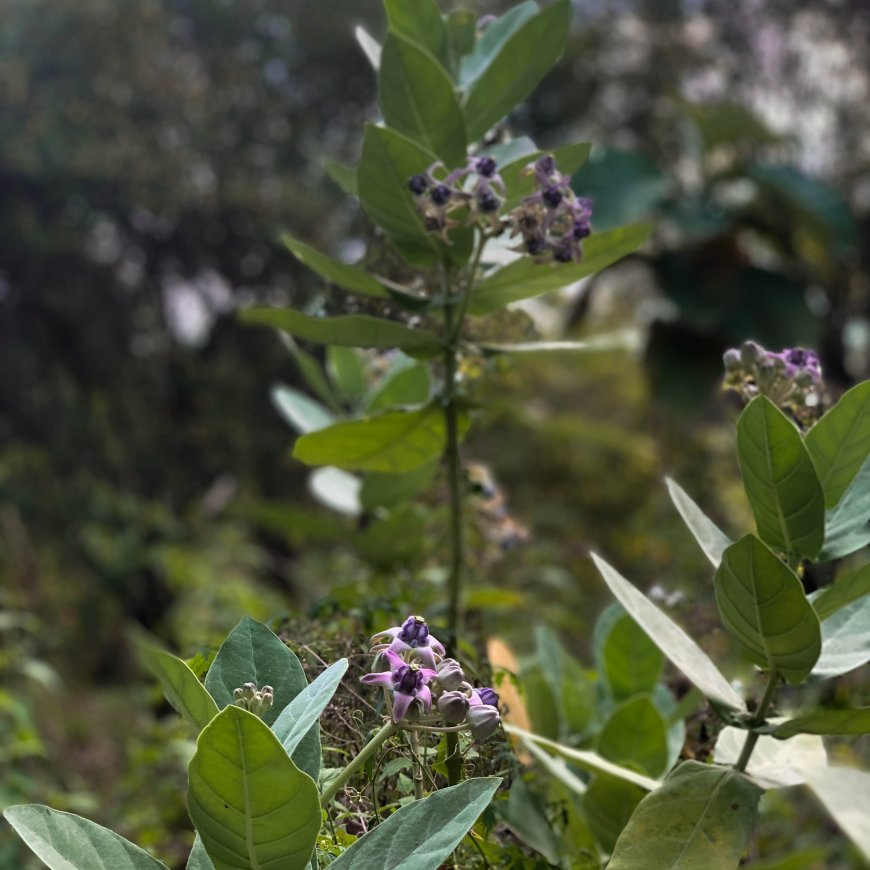
Madori Plant (Photo Source: Editorial Collection)
The Madori plant possesses several distinctive characteristics that set it apart from other plants. Firstly, it has elongated, green leaves with a rough surface. Its stem is erect and features small protruding thorns. However, the most striking aspect of Madori is its large and vibrant-colored flowers, often purple or pink, with captivating crown-shaped petals. Madori's fruit is cone-shaped and contains seeds surrounded by fine fibers. Besides its enchanting beauty, Madori harbors health benefits that may be lesser-known.
Based on research conducted by Muhammadiyah University of Surabaya in a journal titled "The Effectiveness of Applying Calotropis Gigantea Leaf Filtrate as a Natural Pesticide on the Mortality Rate of Apple Snails (Pomacea Canaliculata Lamarck) for the Development of Teaching Materials in Biotechnology for Senior High School Grade XII," it is stated that every part of the Madori plant, from its roots to its leaves and flowers contains unique benefits that can be derived from various compounds within. One prominent compound found in Madori roots is sapogenin. Sapogenin is a compound with properties that can provide significant health benefits to humans.
Sapogenin, found in various plants including Madori, possesses several beneficial properties in traditional and herbal medicine. One of the key properties of sapogenin is its ability to alleviate digestive issues and stomach disorders. This compound is known to assist in addressing digestive discomforts such as bloating.
In the leaves, the Madori plant contains valuable compounds such as flavonoids and polyphenols. Flavonoids and polyphenols are natural compounds with powerful antioxidant properties. These antioxidant properties are crucial for maintaining overall health as these compounds play a role in protecting the body's cells from damage caused by free radicals.
Free radicals are unstable molecules that can damage the body's cells and lead to various health problems, including premature aging, heart disease, and even cancer. The flavonoid and polyphenol compounds in Madori leaves help capture and eliminate these free radicals, thus helping protect the body from damage caused by external factors such as air pollution, UV exposure, and harmful chemicals.
In addition to their antioxidant properties, flavonoids and polyphenols also have anti-inflammatory properties. This means that these compounds can help reduce inflammation in the body. Chronic inflammation can be a cause of various diseases, including heart disease, diabetes, and arthritis. Therefore, consuming these anti-inflammatory compounds through Madori plants can help maintain overall health.
Tannin compounds found in Madori plants play a crucial role in wound healing. Tannins are compounds with strong antiseptic properties. These antiseptic properties make them highly effective in stopping the growth of microorganisms that can cause infections in wounds. When tannin is applied to a wound, it helps clean the area and prevents infection, which in turn accelerates the wound healing process.
The last compound found in Madori plants is calcium oxalate. Although calcium oxalate is present in some parts of the plant, it has specific health benefits in addressing kidney stone issues. In this context, calcium oxalate can help reduce the risk of kidney stone formation. However, it's essential to consume calcium oxalate carefully, especially for individuals with a history of kidney stones. Too much calcium oxalate in the diet can potentially worsen issues for those prone to kidney stone formation.

Processing of Madori Plant for Gastritis Treatment (Photo Source: Editorial Collection)
Madori plants also play a significant role in addressing other diseases, such as gastritis. Gastritis is a medical condition that occurs when the lining of the stomach becomes inflamed or irritated. The stomach is a digestive organ that plays a vital role in the digestion of food. When the stomach lining becomes inflamed, it can lead to uncomfortable symptoms and, if left untreated, can become a serious problem. To treat gastritis, a mixture of 20 grams of Crown Flower (Widuri) flowers and 50 grams of peeled Aloe Vera leaves is used. This mixture is boiled with 600 cc of water until it reduces to 300 cc, then allowed to cool, strained, and consumed twice a day, with a dosage of 150 cc each time.
Traditional Medical like Usadha Bali reflect how the richness of nature and local knowledge can coexist with religious beliefs, creating a holistic and sustainable healthcare system. In doing so, Bali not only becomes a place where culture, tradition, and traditional knowledge continue to thrive and evolve but also offers benefits to the health and well-being of its people. Enjoy exploring the wonders of the island of Bali, where nature and culture grow together.


















































